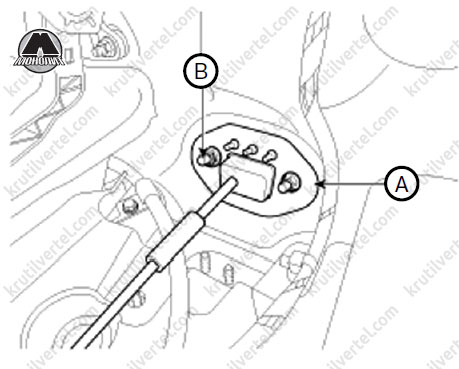
How to replace the control arm assembly
The control levers are the attachment point for the wheel and brake assembly. It must be replaced if it is damaged or bushings and ball joints are worn.
Control arms are an important part of your vehicle's suspension. They provide an attachment point for the wheel assembly, including the wheel hub and brake assembly. The control levers also provide a pivot point for your wheel to move up and down as well as turn left and right. The front lower arm is attached with the inner end to the engine or suspension frame with rubber bushings, and with the outer end - with a ball joint to the wheel hub.
If the suspension arm is damaged by an impact, or if the bushings and/or ball joint need to be replaced due to wear, it is more reasonable to replace the entire arm as it usually comes complete with new bushings and ball joint.
Part 1 of 2. Raise your car
Necessary materials
- Jack
- Jack stands
Wheel chocks
Attention: Be sure to use a jack and stands with the correct capacity to lift and support your vehicle. If you're unsure of your vehicle's weight, check the VIN number label, usually found on the inside of the driver's door or on the door frame itself, to find out your vehicle's Gross Vehicle Weight (GVWR).
Step 1: Find your car's jacking points. Because most vehicles are low to the ground and have large pans or trays under the front of the vehicle, it's best to clean one side at a time.
Jack up the vehicle at the recommended points instead of trying to raise it by sliding the jack under the front of the vehicle.
- Attention: Some vehicles have clear markings or cutouts under the sides of the vehicle near each wheel to indicate the correct jacking point. If your vehicle does not have these guidelines, refer to your owner's manual to determine the correct location of the jack points. When replacing suspension components, it is safer not to lift the vehicle by any of the suspension points.
Step 2: Fix the wheel. Place wheel chocks or blocks in front of and behind at least one or both rear wheels.
Raise the vehicle slowly until the tire is no longer in contact with the ground.
Once you get to this point, find the lowest point under the car where you can place the jack.
- Attention: Make sure each leg of the jack is in a strong place, such as under a cross member or chassis, to support the vehicle. Once installed, slowly lower the vehicle onto the stand using a floor jack. Do not lower the jack completely and keep it in the extended position.
Part 2 of 2: Suspension Arm Replacement
Necessary materials
- Ball Joint Separation Tool
- Breaker optional
- Hammer
- Ratchet / sockets
- Replacing the control lever(s)
- Keys - open / cap
Step 1: remove the wheel. Using a ratchet and socket, loosen the nuts on the wheel. Carefully remove the wheel and set it aside.
Step 2: Separate the ball joint from the hub.. Choose a head and wrench of the right size. The ball joint has a stud that goes into the wheel hub and is fixed with a nut and bolt. Delete them.
Step 3: Separate the ball joint. Insert the ball joint cage between the ball joint and the hub. Hit it with a hammer.
Don't worry if it takes a few good hits to separate them.
- Attention: Age and mileage sometimes make it difficult to separate them.
Step 4: Separate the control lever from the holder. On some vehicles, you will be able to remove the control arm bolt with a ratchet/socket on one side and a wrench on the other. Others may require you to use two keys due to lack of space.
After you unscrew the nut and bolt, the control lever should extend. Use a small muscle to remove it if necessary.
Step 5: Install the New Control Arm. Install the new suspension arm in the reverse order of removal.
Bolt the control arm support side, then screw the ball joint to the hub, making sure to push it all the way in before tightening the bolt.
Reinstall the wheel and lower the vehicle once the control lever is secure. If necessary, repeat the procedure on the opposite side.
Be sure to check the wheel alignment after any suspension repair. If you are not comfortable doing this process yourself, contact a certified specialist, for example, from AvtoTachki, who will replace the lever assembly for you.

